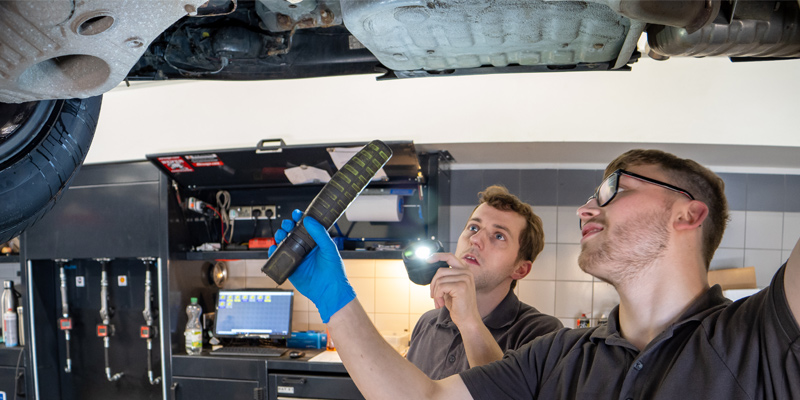When it comes to keeping your car roadworthy and running smoothly, two terms frequently crop up in conversations with mechanics and in automotive advice: MOT and service. While both are crucial aspects of vehicle maintenance, many UK drivers find themselves confused about the differences between these two procedures. This confusion is understandable, as both involve taking your car to a garage for inspection and potential work, but they serve distinctly different purposes and have very different legal implications.
Understanding the distinction between an MOT test and a car service is essential for every vehicle owner in the UK. Not only does this knowledge help you budget appropriately for your car’s maintenance needs, but it also ensures you remain compliant with legal requirements while keeping your vehicle in optimal condition. The consequences of misunderstanding these requirements can range from unexpected costs and inconvenience to serious legal penalties and safety risks.
This comprehensive guide will explore the fundamental differences between MOT tests and car servicing, examining their purposes, legal requirements, costs, and how they complement each other in maintaining your vehicle’s safety, performance, and longevity. Whether you’re a new driver navigating these requirements for the first time or an experienced motorist looking to clarify your understanding, this article will provide you with all the information you need to make informed decisions about your vehicle’s care.
Understanding the MOT Test
What is an MOT?
The MOT test stands as one of the most important legal requirements for vehicle ownership in the United Kingdom. Originally named after the Ministry of Transport, which introduced the test in 1960, the MOT has evolved into a comprehensive annual examination that ensures vehicles meet minimum safety, roadworthiness, and environmental standards. Today, the test is administered by the Driver and Vehicle Standards Agency (DVSA), which oversees the entire MOT system across the country.
The MOT test is mandatory for all vehicles that are three years old or older, with the notable exception of vehicles over 40 years old, which are considered historic and exempt from testing. This means that from the moment your car reaches its third birthday, you must ensure it has a valid MOT certificate to remain legal on UK roads. The test must be renewed annually, and the certificate is valid for exactly 12 months from the date of issue.
The scope of the MOT test is deliberately focused on safety and environmental impact rather than the general condition or performance of your vehicle. During the test, qualified examiners check various systems and components to ensure they meet the required standards. These include lighting systems, brakes, steering, tyres, seatbelts, exhaust emissions, and numerous other safety-critical elements. The test follows a standardized procedure that is the same regardless of where you take your vehicle, ensuring consistency across all authorized MOT test centres.
The MOT operates on a clear pass-or-fail system, with defects categorized into three levels: minor, major, and dangerous. Minor defects are recorded as advisories but don’t prevent your vehicle from passing the test. Major defects result in a test failure and must be repaired before a retest can be passed. Dangerous defects also cause failure but additionally mean you cannot legally drive the vehicle until the issues are resolved, as they pose an immediate risk to safety.
Legal Requirements and Consequences
The legal framework surrounding MOT testing is robust and carries significant penalties for non-compliance. Under UK law, driving a vehicle without a valid MOT certificate is a serious offense that can result in fines of up to £1,000 for standard violations. However, if your vehicle is found to have dangerous defects that should have been identified during an MOT test, this fine can increase dramatically to £2,500, and you may also face a driving ban and penalty points on your license.
Beyond the immediate legal penalties, driving without a valid MOT has serious implications for your insurance coverage. Most insurance policies become invalid if your vehicle doesn’t have a current MOT certificate, meaning you would be driving without insurance – another serious offense that carries its own penalties of up to £300 in fines and six penalty points. In the event of an accident, you would be personally liable for all damages and costs, which could amount to tens of thousands of pounds.
There are only three specific circumstances under which you are legally permitted to drive a vehicle without a valid MOT certificate. First, you can drive to a pre-booked MOT test appointment. Second, you can drive from an MOT test centre to a garage for repairs if your vehicle has failed its test. Third, you can continue driving if your previous MOT certificate is still valid and your recent test revealed no dangerous defects. In all other circumstances, driving without a valid MOT is illegal and carries the penalties outlined above.
The DVSA takes MOT compliance seriously and has various enforcement mechanisms in place. Police officers can check MOT status during routine stops, and the DVSA conducts regular compliance checks. Additionally, Automatic Number Plate Recognition (ANPR) systems can identify vehicles without valid MOT certificates, leading to automatic enforcement action.
Understanding Car Servicing
What is a Car Service?
Car servicing represents a fundamentally different approach to vehicle maintenance compared to the MOT test. While the MOT focuses on legal compliance and minimum safety standards, servicing is designed to maintain your vehicle’s performance, reliability, and longevity through preventive maintenance and care. Unlike the MOT, car servicing is not a legal requirement, but it plays a crucial role in keeping your vehicle running efficiently and can help prevent costly breakdowns and repairs.
A car service typically involves a comprehensive inspection of your vehicle’s systems, replacement of worn components, and maintenance tasks designed to keep everything functioning optimally. The scope and depth of a service can vary significantly depending on the type of service you choose and your vehicle’s specific needs. Most manufacturers recommend different levels of servicing at specific intervals, usually based on mileage or time periods, whichever comes first.
Basic services, often called interim or minor services, typically occur every six months or 6,000 miles and focus on essential safety checks and basic maintenance tasks. These might include checking fluid levels, testing lights and indicators, inspecting tyres, and performing basic engine diagnostics. Full services, usually recommended annually or every 12,000 miles, involve more comprehensive inspections and maintenance tasks, including changing engine oil and filters, checking the exhaust system, testing the battery and charging system, and inspecting suspension components.
Major services, typically performed every 18-24 months or 18,000-24,000 miles, represent the most thorough level of maintenance. These services include everything from basic and full services plus additional tasks such as replacing spark plugs, changing transmission fluid, inspecting timing belts, and performing comprehensive diagnostic checks on all vehicle systems. Some major services also include replacing components that wear over time, such as air filters, fuel filters, and brake fluid.
Benefits of Regular Servicing
The benefits of regular car servicing extend far beyond simply keeping your vehicle running. Perhaps most importantly, regular servicing helps identify potential problems before they become serious and expensive to repair. During a service, qualified technicians can spot early signs of wear or developing issues that might not be apparent to the average driver. Addressing these problems early can save hundreds or even thousands of pounds in repair costs and prevent inconvenient breakdowns.
Regular servicing also plays a crucial role in maintaining your vehicle’s performance and fuel efficiency. Clean air filters, fresh engine oil, properly adjusted engine components, and well-maintained systems all contribute to optimal performance and can improve fuel economy. In an era of rising fuel costs, the savings from improved efficiency can quickly offset the cost of regular servicing.
From a safety perspective, while servicing isn’t legally required like the MOT, it contributes significantly to road safety by ensuring all vehicle systems are functioning correctly. Many safety-critical components, such as brakes, tyres, and steering systems, benefit from regular inspection and maintenance that goes beyond the minimum requirements of an MOT test.
For vehicles still under warranty, regular servicing according to manufacturer specifications is typically required to maintain warranty coverage. Failing to service your vehicle as recommended can void your warranty, leaving you responsible for repair costs that would otherwise be covered. Additionally, when it comes time to sell your vehicle, a complete service history demonstrates that the car has been well-maintained and can significantly increase its resale value.
Key Differences Between MOT and Service
Purpose and Scope
The fundamental difference between MOT testing and car servicing lies in their primary purposes and the scope of work involved. The MOT test serves as a regulatory safety net, ensuring that vehicles on UK roads meet minimum standards for safety and environmental impact. It’s a snapshot assessment that determines whether your vehicle is legally roadworthy at the time of testing, focusing specifically on components and systems that could pose safety risks or environmental concerns.
In contrast, car servicing takes a holistic approach to vehicle maintenance, focusing on performance optimization, preventive care, and long-term reliability. While an MOT test might check that your brakes work adequately to meet legal requirements, a service would examine brake components for wear, assess brake fluid condition, and recommend replacements or adjustments to ensure optimal braking performance and prevent future problems.
The scope of inspection also differs significantly between the two procedures. MOT tests follow a standardized checklist that covers specific safety and environmental criteria, with testers looking for defects that fall into predetermined categories. The test doesn’t assess general wear and tear unless it affects safety or emissions, and it doesn’t include performance optimization or preventive maintenance tasks.
Servicing, on the other hand, involves a much broader assessment of your vehicle’s condition and needs. Technicians performing a service will examine components for wear, check fluid levels and condition, assess performance parameters, and make recommendations for maintenance or repairs that will keep your vehicle running smoothly. This might include replacing worn but still functional components, updating software, or adjusting systems for optimal performance.
Frequency and Timing
The timing requirements for MOT tests and car servicing follow completely different schedules and logic. MOT testing operates on a rigid annual cycle mandated by law. Once your vehicle reaches three years of age, you must ensure it has a valid MOT certificate at all times, with renewals required every 12 months. You can take your MOT test up to one month before the current certificate expires, and any remaining time will be added to the new certificate, but you cannot extend this period or skip tests.
Car servicing schedules, however, are typically based on manufacturer recommendations that consider both time and mileage intervals. Most manufacturers suggest servicing every 6-12 months or every 6,000-12,000 miles, whichever comes first. These intervals can vary significantly depending on your vehicle’s make, model, age, and how you use it. Vehicles used for frequent short journeys, towing, or in harsh conditions may require more frequent servicing than those used primarily for long-distance highway driving.
The flexibility in servicing schedules allows you to adapt maintenance to your specific needs and circumstances. If you drive very few miles per year, you might extend service intervals slightly, while high-mileage drivers might need more frequent attention. However, this flexibility comes with the responsibility to monitor your vehicle’s condition and adjust servicing frequency accordingly.
Many vehicle owners find it convenient to coordinate their MOT and service schedules, particularly if both are due around the same time. This approach can save time and sometimes money, as many garages offer combined MOT and service packages. When you book your MOT, you can often arrange for servicing to be completed simultaneously, ensuring your vehicle receives comprehensive attention in a single visit.
Cost Considerations
The cost structures for MOT tests and car servicing differ significantly, reflecting their different purposes and scope. MOT test fees are regulated by the government, with a maximum fee of £54.85 for cars and £29.65 for motorcycles. This fee covers only the test itself and doesn’t include any repairs or additional work that might be needed. Many test centres charge less than the maximum fee, and some offer competitive pricing to attract customers, but the cost is relatively predictable and standardized across the country.
Car servicing costs, however, can vary dramatically depending on numerous factors. The type of service, your vehicle’s make and model, the garage you choose, your location, and what work is actually needed all influence the final cost. A basic interim service might cost £100-200, while a comprehensive major service could cost £300-600 or more, especially for luxury or specialist vehicles.
The value proposition of each procedure also differs significantly. With an MOT test, you’re paying for legal compliance and the peace of mind that comes with knowing your vehicle meets safety standards. The test itself doesn’t improve your vehicle’s condition, but it identifies issues that need attention and ensures you can legally drive your car.
Servicing costs, while potentially higher, represent an investment in your vehicle’s performance, reliability, and longevity. Regular servicing can prevent expensive breakdowns, improve fuel efficiency, maintain warranty coverage, and preserve your vehicle’s resale value. When viewed over the long term, the cost of regular servicing often pays for itself through reduced repair costs and improved reliability.
Do You Need Both?
The relationship between MOT testing and car servicing is complementary rather than competitive, with each serving essential but different roles in responsible vehicle ownership. While the MOT test ensures legal compliance and basic safety standards, regular servicing maintains performance and prevents problems before they become serious or expensive to repair.
From a legal standpoint, you absolutely need a valid MOT certificate for any vehicle over three years old. There’s no choice in this matter – it’s a legal requirement with serious consequences for non-compliance. However, while servicing isn’t legally mandated, it’s strongly recommended for anyone who wants to maintain their vehicle’s reliability, performance, and value.
The timing of both procedures can often be coordinated for convenience and potential cost savings. Many garages offer combined MOT and service packages that can save time and sometimes money compared to having the work done separately. When you need to book your MOT, consider whether your vehicle is also due for a service, as combining these procedures can be highly efficient.
Professional automotive technicians can provide valuable advice on coordinating your vehicle’s maintenance schedule. They can assess your driving patterns, vehicle condition, and specific needs to recommend an optimal schedule that ensures legal compliance while maintaining your vehicle in excellent condition. This professional guidance can help you avoid unnecessary costs while ensuring you don’t miss critical maintenance that could lead to expensive problems later.
Conclusion
Understanding the differences between MOT tests and car servicing is crucial for every UK vehicle owner. While the MOT test serves as a legal requirement focused on safety and environmental compliance, car servicing provides the preventive maintenance necessary for optimal performance and reliability. Both play essential roles in responsible vehicle ownership, and neither should be neglected.
The MOT test ensures your vehicle meets minimum legal standards and can be driven safely on public roads, while regular servicing maintains your vehicle’s condition, prevents problems, and optimizes performance. Together, they provide a comprehensive approach to vehicle maintenance that keeps you legal, safe, and mobile.
For authoritative information about MOT requirements and procedures, consult the DVSA’s official guidance, which provides up-to-date information about testing standards, requirements, and changes to the MOT system. By understanding and fulfilling both your legal obligations and maintenance needs, you can enjoy safe, reliable, and cost-effective motoring for years to come.






